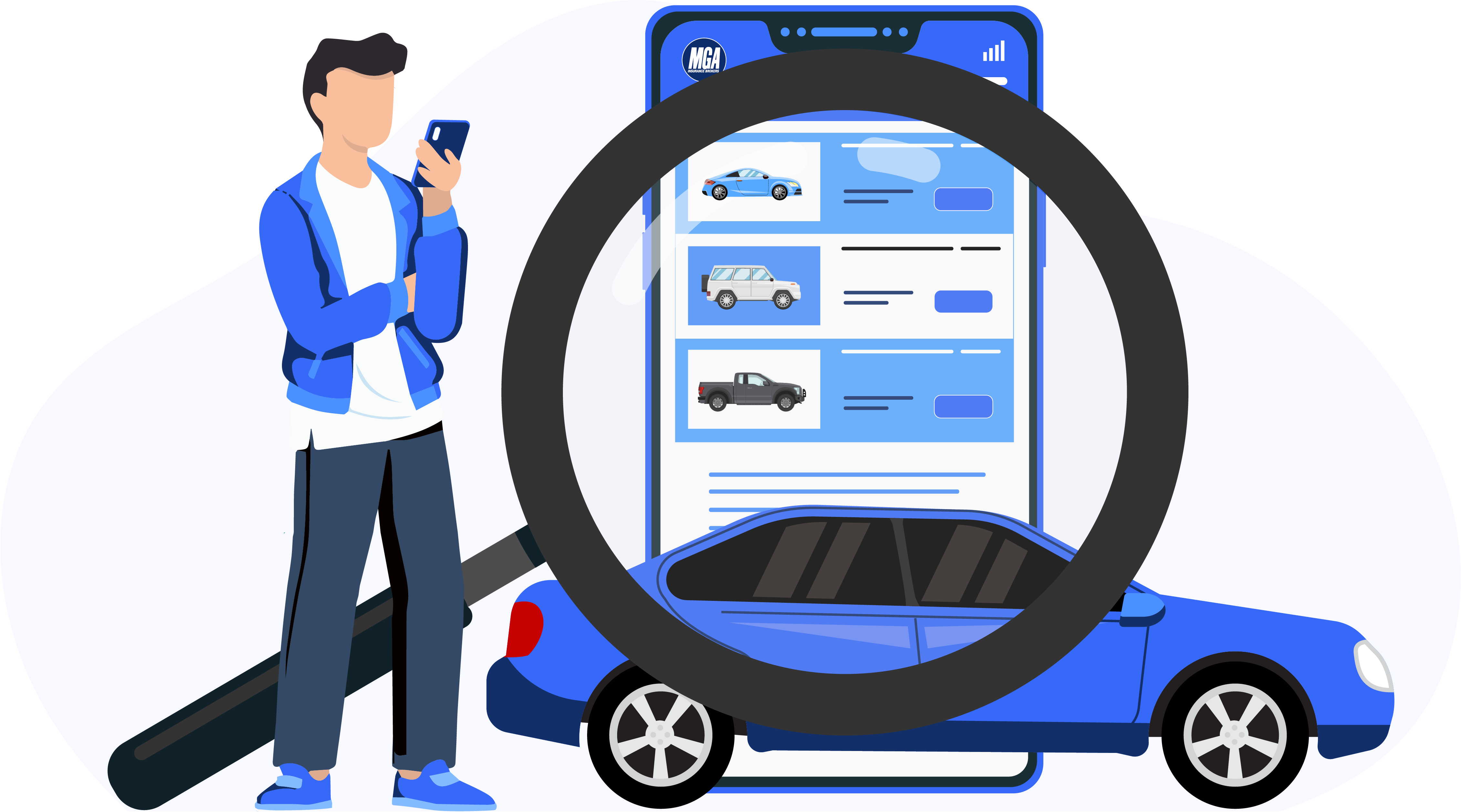
When it comes to car insurance, finding affordable coverage that fits your needs can feel like a challenge. With so many providers, policy options, and pricing factors to consider, it’s easy to feel overwhelmed. Fortunately, purchasing cheap car insurance online offers a convenient and efficient way to compare options, explore discounts, and secure the best deal without sacrificing essential coverage.
In this blog, we’ll guide you through how to find cheap car insurance online, the factors that influence rates, and tips for saving money while ensuring you’re adequately protected on the road.
Why Should You Buy Cheap Car Insurance Online?
Buying cheap car insurance online is becoming increasingly popular, and for good reason. Here are some of the key benefits of shopping for affordable coverage over the internet:
1. Instant Quotes and Comparisons
When shopping online, you can easily compare quotes from multiple insurance companies in a matter of minutes. This ability to compare rates ensures you’re getting the best deal possible without the hassle of calling different agents or brokers. Online comparison tools allow you to enter your details once and receive quotes from several providers, saving you time and effort.
2. Convenience and Flexibility
Buying car insurance online is quick and convenient. You can get quotes, review policies, and purchase coverage from the comfort of your home at any time. There’s no need to set appointments or wait for office hours—everything can be done at your own pace. Additionally, many insurers allow you to manage your policy and file claims online, making it easy to adjust your coverage or get assistance whenever you need it.
3. Access to Discounts
Many online car insurance providers offer exclusive discounts for customers who shop online. These discounts can range from lower rates for bundling policies to savings for safe driving habits. By purchasing insurance online, you may be able to unlock additional savings that you wouldn’t get by going through a traditional agent.
4. Better Control Over Your Policy
Online platforms give you full control over your policy choices. You can customize your coverage limits, adjust your deductibles, and select additional coverage options with just a few clicks. This flexibility allows you to find the balance between affordability and protection that suits your unique needs.
Factors That Affect Car Insurance Rates
Understanding the factors that influence your car insurance rates will help you find cheap car insurance online and avoid unexpected surprises. Here are some of the most important variables that affect your premiums:
1. Your Driving Record
Insurance companies assess your driving history to determine how risky you are as a driver. A clean driving record with no accidents or violations will typically result in lower rates. However, if you have a history of speeding tickets, accidents, or claims, your rates may be higher.
Tip: If you’re a safe driver, many insurers offer discounts for maintaining a clean record over a set number of years.
2. Your Vehicle
The make, model, and year of your vehicle play a significant role in determining your insurance premium. Newer cars or high-end models may cost more to insure due to their higher repair costs and theft risk. Vehicles with advanced safety features or lower accident rates may also be eligible for discounts.
Tip: If you’re considering purchasing a new vehicle, research its insurance costs before making the final decision.
3. Your Location
Where you live affects your car insurance rates. Urban areas with higher traffic volumes and a greater risk of accidents or theft generally have higher premiums. On the other hand, rural areas may have lower rates due to less traffic and lower accident rates.
Tip: If you’ve recently moved, you may want to check if your new location has an impact on your premium.
4. Your Age and Gender
Age and gender can influence your rates, especially for younger and less experienced drivers. Statistically, drivers under 25 are considered higher risk and tend to pay higher premiums. In general, men under 25 may face higher rates than women of the same age.
Tip: If you’re a younger driver, consider taking a defensive driving course, as some insurers offer discounts for completing one.
5. Coverage Levels and Deductibles
The amount of coverage you choose and the deductible you set can significantly impact your insurance premium. Higher coverage limits or low deductibles mean higher premiums, while higher deductibles or lower coverage can save you money.
Tip: If you have an older car, you might opt for a lower level of coverage (e.g., dropping comprehensive or collision coverage) to save on premiums.
6. Credit Score
In many states, insurance companies use your credit score to help determine your rates. A higher credit score often correlates with lower premiums, as insurers view drivers with good credit as less risky.
Tip: If your credit score is less than ideal, work on improving it over time to lower your future premiums.
How to Find Cheap Car Insurance Online: Step-by-Step Guide
Now that you know the factors that influence car insurance rates, let’s walk through the steps to find cheap car insurance online.
1. Gather Your Information
Before you start comparing quotes online, make sure you have all the necessary information ready. You’ll typically need:
- Personal information: Name, address, and contact details.
- Vehicle details: Make, model, year, and VIN (Vehicle Identification Number).
- Driving history: Any tickets, accidents, or claims in the past 3-5 years.
- Current insurance policy (if applicable): If you already have insurance, your current policy will provide valuable information about your existing coverage.
Having this information handy will help you get accurate quotes and avoid delays.
2. Use Car Insurance Comparison Websites
Start by using online comparison tools to get quotes from different insurance providers. Websites like The Zebra, Policygenius, Compare.com, and Insure.com allow you to compare rates from multiple companies at once. By entering your details once, you’ll receive several quotes that you can review and compare.
3. Evaluate Coverage Options
When you receive quotes, pay attention to the coverage options offered. Make sure the policies meet your state’s minimum requirements for liability coverage, and assess whether you need additional coverage like comprehensive or collision. For cheap car insurance, you may consider reducing coverage for older vehicles or adjusting deductibles.
4. Look for Discounts
Check if the insurance companies offer any discounts that could lower your rates. Common discounts include:
- Multi-car discount: If you insure more than one vehicle with the same company.
- Safe driver discount: For drivers with a clean record.
- Bundling discount: If you combine car insurance with other policies (e.g., home or renters insurance).
- Low-mileage discount: For drivers who don’t drive often.
- Good student discount: For students with good grades.
Take advantage of these discounts to further reduce your premiums.
5. Choose the Best Policy
Once you’ve compared quotes and found a policy that fits your budget and needs, you can finalize your purchase online. Many insurers offer the option to pay your premium in full, or you can set up monthly payments. Be sure to review the policy details carefully before purchasing.
6. Review Annually
Car insurance rates can change over time due to factors like changes in your driving record or the value of your vehicle. Make it a habit to review your car insurance policy every year to ensure you’re still getting the best deal and to see if there are new discounts or options available.
Additional Tips for Finding Cheap Car Insurance
- Increase Your Deductible: A higher deductible means you’ll pay more out-of-pocket in the event of a claim, but it can lower your monthly premium.
- Maintain a Clean Driving Record: Avoid tickets and accidents to help keep your rates lower.
- Consider Pay-Per-Mile Insurance: If you don’t drive much, consider a pay-per-mile insurance policy, which could be a cost-effective option.
Conclusion
Finding cheap car insurance online doesn’t have to be a daunting task. By comparing quotes, adjusting your coverage options, and taking advantage of discounts, you can secure affordable coverage that meets your needs. The convenience of online shopping allows you to do all of this from the comfort of your home, with the flexibility to make changes as your circumstances evolve.
Remember, while saving money is important, make sure you don’t compromise on coverage that’s essential for your protection. With the right approach, you can find a car insurance policy that offers the perfect balance of affordability and security.

